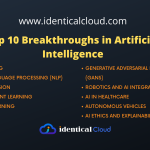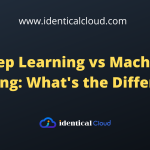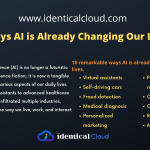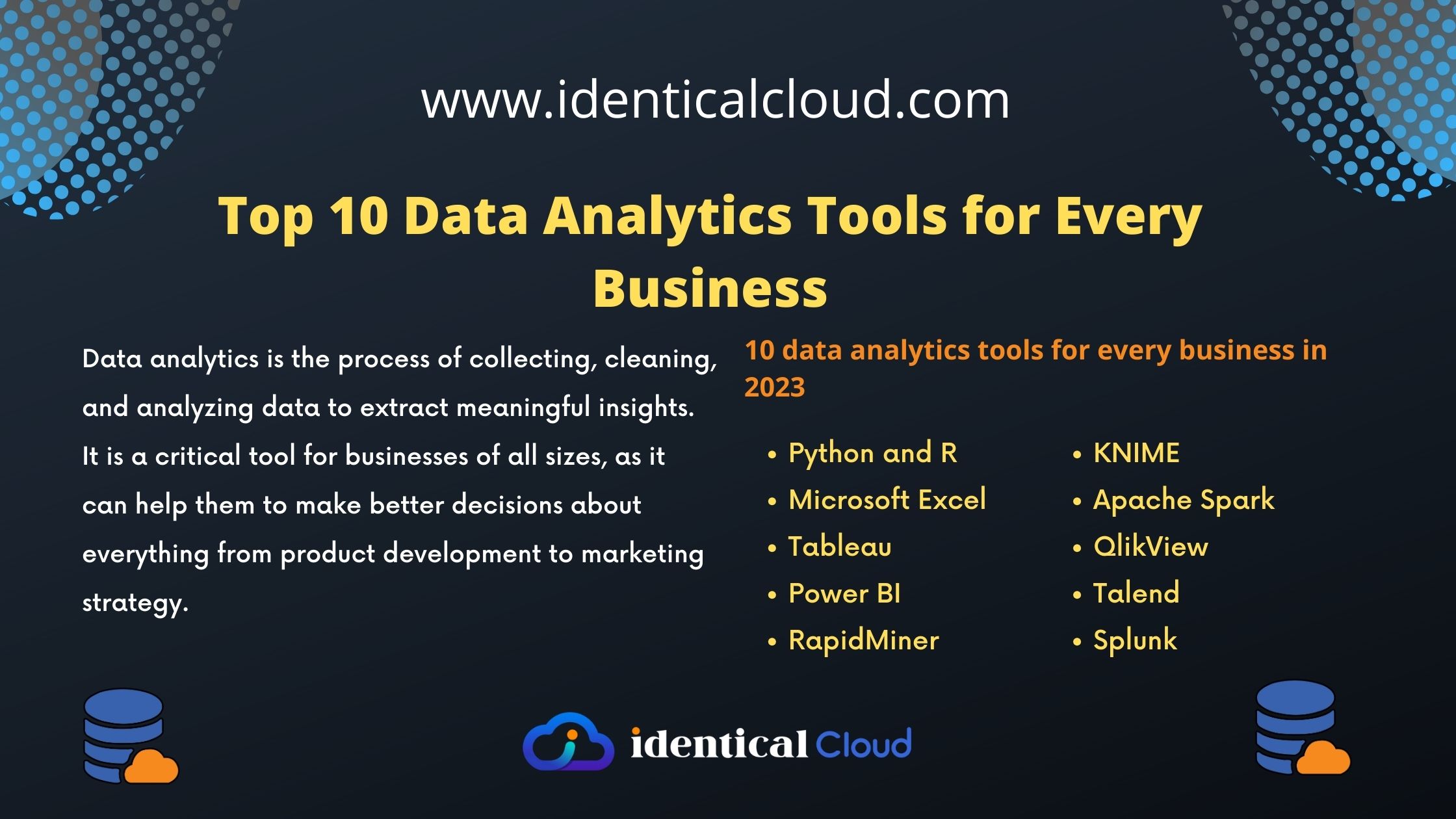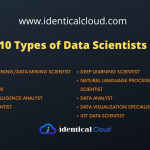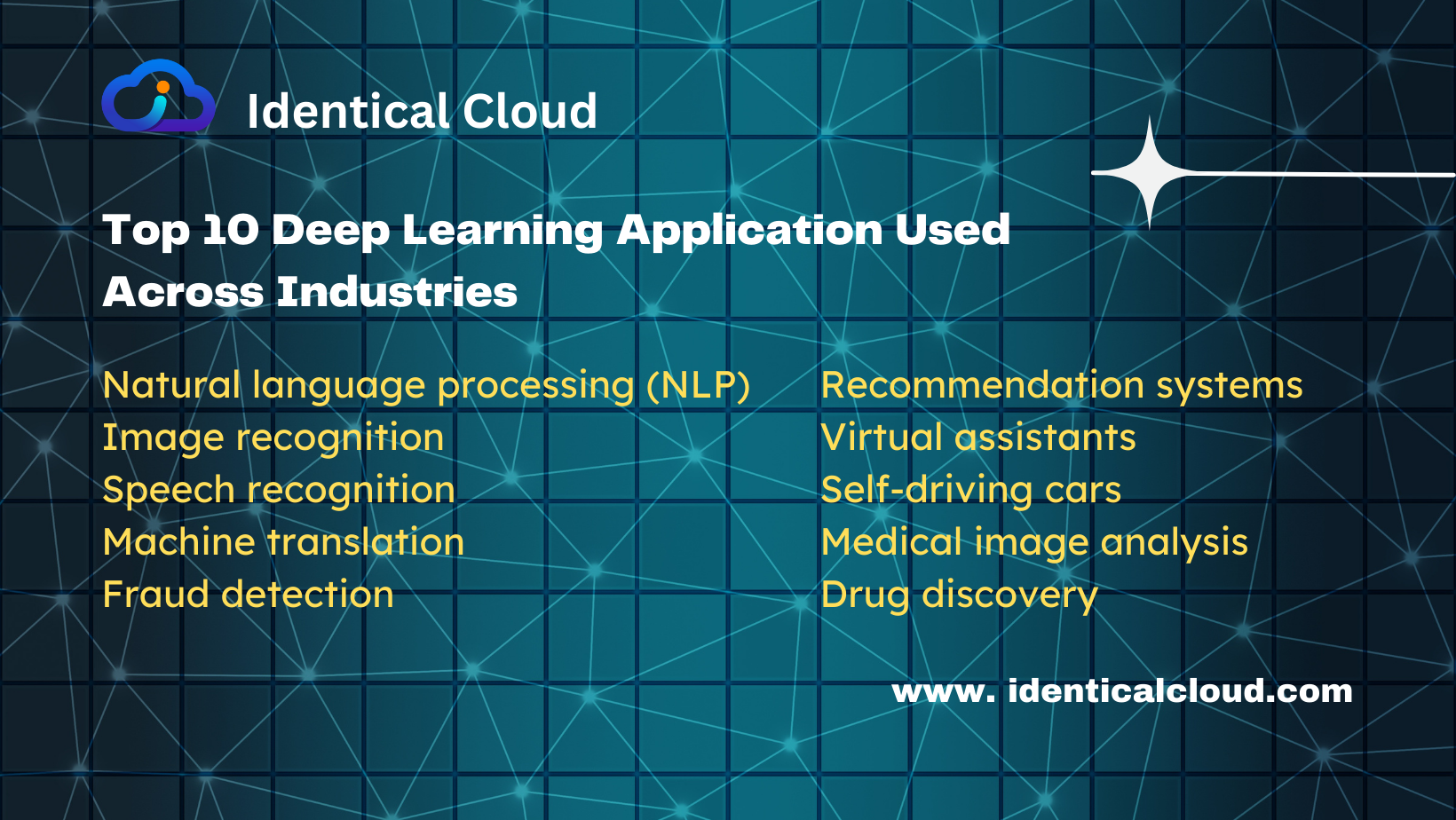
Top 10 Deep Learning Application Used Across Industries
Top 10 Deep Learning Application Used Across Industries
What is deep learning?
Deep learning is a type of machine learning that uses artificial neural networks to learn from data. It is a powerful technology that is being used to develop new and innovative applications across industries.
Artificial neural networks are inspired by the human brain. They are made up of interconnected nodes, called neurons, that can learn to recognize patterns in data. Deep learning algorithms train these neural networks on large datasets, and the networks learn to make predictions or decisions based on the patterns they have learned.
Here are the top 10 deep learning applications used across industries:
Natural language processing (NLP)
Deep learning is used in NLP to develop algorithms that can understand and process human language. This is used in a variety of applications, such as chatbots, machine translation, and text analysis.
Natural language processing (NLP) is a field of computer science that deals with the interaction between computers and human (natural) languages, in particular how to program computers to process and analyze large amounts of natural language data.
NLP has a wide range of applications, including:
- Machine translation: NLP is used in machine translation to develop algorithms that can translate text from one language to another. This is used in a variety of applications, such as translation software, websites, and mobile apps.
- Text analysis: NLP is used in text analysis to develop algorithms that can extract meaning from text. This is used in a variety of applications, such as sentiment analysis, spam filtering, and customer feedback analysis.
- Chatbots: NLP is used in chatbots to develop algorithms that can understand and respond to user queries. This is used in a variety of applications, such as customer service, education, and entertainment.
- Virtual assistants: NLP is used in virtual assistants to develop algorithms that can understand and respond to user requests. This is used in a variety of devices, such as smartphones, speakers, and cars.
- Question answering: NLP is used in question answering to develop algorithms that can answer user questions. This is used in a variety of applications, such as search engines, educational tools, and customer service systems.
NLP is a rapidly growing field, and new applications are being developed all the time. As computers become more powerful and NLP algorithms become more sophisticated, NLP is likely to play an increasingly important role in our lives.
Image recognition
Deep learning is used in image recognition to develop algorithms that can identify objects in images. This is used in a variety of applications, such as self-driving cars, facial recognition, and medical image analysis.
It is a powerful technology that is being used in a variety of applications, such as:
- Self-driving cars: Self-driving cars use image recognition to identify objects in the road, such as other cars, pedestrians, and traffic signs. This allows them to make safe decisions about how to drive.
- Facial recognition: Facial recognition uses image recognition to identify people in images. It is used in a variety of applications, such as security, access control, and social media.
- Medical image analysis: Medical image analysis uses image recognition to identify and diagnose diseases in medical images. It is used in a variety of applications, such as cancer detection, heart disease diagnosis, and stroke prediction.
- Product identification: Product identification uses image recognition to identify products in images. It is used in a variety of applications, such as retail, inventory management, and logistics.
- Scene understanding: Scene understanding uses image recognition to understand the context of an image. This can be used for a variety of purposes, such as navigation, augmented reality, and virtual reality.
Image recognition is a rapidly growing field, and new applications are being developed all the time. As image recognition technology continues to develop, we can expect to see even more innovative applications in the future.
Speech recognition
Deep learning is used in speech recognition to develop algorithms that can understand human speech. This is used in a variety of applications, such as voice assistants, dictation software, and call centers.
It is used in a variety of applications, such as:
- Virtual assistants: Virtual assistants like Amazon Alexa, Google Assistant, and Apple Siri use speech recognition to understand and respond to user commands.
- Call centers: Call centers use speech recognition to transcribe phone calls, which can then be used to train customer service representatives and improve customer satisfaction.
- Dictation software: Dictation software uses speech recognition to convert spoken words into text. This can be used for a variety of purposes, such as writing documents, creating presentations, and taking notes.
- Controlling devices: Speech recognition can be used to control devices, such as TVs, thermostats, and lights. This can be done by simply speaking to the device, without having to use a remote control or touch screen.
- Gaming: Speech recognition can be used to control games, without having to use a controller. This can be a more immersive experience, and it can also be helpful for people with disabilities who may have difficulty using a controller.
Speech recognition is a rapidly growing field, and new applications are being developed all the time. As speech recognition technology continues to develop, we can expect to see even more innovative applications in the future.
Machine translation
Deep learning is used in machine translation to develop algorithms that can translate text from one language to another. This is used in a variety of applications, such as translation software, websites, and mobile apps.
Machine translation (MT) is a type of artificial intelligence (AI) that enables computers to translate text from one language to another.
It is a powerful technology that is being used in a variety of applications, such as:
- Translation software: Translation software uses MT to translate text from one language to another. This is used by a variety of people, such as travelers, students, and businesses.
- Websites: Websites can use MT to translate their content into multiple languages. This can be helpful for businesses that want to reach a global audience.
- Mobile apps: Mobile apps can use MT to translate their content into multiple languages. This can be helpful for businesses that want to reach a global audience.
- Social media: Social media platforms can use MT to translate user posts into multiple languages. This can help to break down language barriers and make social media more accessible to a global audience.
- Government services: Government services can use MT to translate documents and forms into multiple languages. This can help to make government services more accessible to immigrants and other people who do not speak the local language.
MT is a rapidly growing field, and new applications are being developed all the time. As MT technology continues to develop, we can expect to see even more innovative applications in the future.
Fraud detection
Deep learning is used in fraud detection to develop algorithms that can identify fraudulent transactions. This is used in a variety of industries, such as banking, finance, and retail.
Fraud detection is the process of identifying and preventing fraudulent activity. It is a critical task for businesses of all sizes, as fraud can cost millions of dollars each year.
Deep learning is being used to develop new and innovative fraud detection techniques. These techniques can be used to identify fraudulent transactions, such as credit card fraud, insurance fraud, and identity theft.
Here are some of the ways that deep learning is being used for fraud detection:
- Fraudulent transaction identification: Deep learning models can be used to identify fraudulent transactions by analyzing a variety of factors, such as the amount of money being transferred, the source and destination of the transaction, and the customer’s purchase history.
- Customer profiling: Deep learning models can be used to create customer profiles that can be used to identify fraudulent activity. For example, a model might be trained to identify customers who are more likely to commit credit card fraud based on their spending habits and other factors.
- Anomaly detection: Deep learning models can be used to detect anomalies in data that might be indicative of fraud. For example, a model might be trained to identify credit card transactions that are unusually large or that occur at unusual times of day.
Deep learning is a powerful tool for fraud detection, and it is being used by a growing number of businesses to protect themselves from financial losses. As deep learning technology continues to develop, we can expect to see even more innovative fraud detection techniques being developed in the future.
Recommendation systems
Deep learning is used in recommendation systems to develop algorithms that can recommend products or services to users. This is used in a variety of industries, such as e-commerce, streaming media, and social media.
Deep learning is being used to develop new and innovative recommendation systems. These systems can be used to recommend products, movies, songs, and other items to users based on their past behavior and preferences.
Here are some of the ways that deep learning is being used for recommendation systems:
- Collaborative filtering: Collaborative filtering is a technique that uses the ratings of other users to recommend items to a particular user. Deep learning can be used to improve the accuracy of collaborative filtering by taking into account a variety of factors, such as the user’s past ratings, the ratings of other users, and the similarity between users.
- Content-based filtering: Content-based filtering recommends items to a user based on the content of the items that the user has previously rated. Deep learning can be used to improve the accuracy of content-based filtering by taking into account a variety of factors, such as the user’s past ratings, the content of the items, and the similarity between items.
- Hybrid recommendation systems: Hybrid recommendation systems combine collaborative filtering and content-based filtering to recommend items to users. Deep learning can be used to improve the accuracy of hybrid recommendation systems by taking into account a variety of factors, such as the user’s past ratings, the ratings of other users, the content of the items, and the similarity between items.
Deep learning is a powerful tool for recommendation systems, and it is being used by a growing number of businesses to improve the accuracy of their recommendations. As deep learning technology continues to develop, we can expect to see even more innovative recommendation systems being developed in the future.
Virtual assistants
Deep learning is used in virtual assistants to develop algorithms that can understand and respond to user requests. This is used in a variety of devices, such as smartphones, speakers, and cars.
Virtual assistants are computer programs that can simulate conversation with human users. They are often used to answer questions, set alarms, and control smart home devices.
Deep learning is being used to develop new and innovative virtual assistants. These assistants can be more natural and engaging than traditional virtual assistants, and they can be used to perform a wider range of tasks.
Here are some of the ways that deep learning is being used for virtual assistants:
- Natural language processing: Deep learning is being used to improve the natural language processing (NLP) capabilities of virtual assistants. This allows the assistants to understand and respond to human language more accurately and fluently.
- Machine learning: Deep learning is being used to develop machine learning models that can learn from the user’s behavior and preferences. This allows the assistants to become more personalized and helpful over time.
- Computer vision: Deep learning is being used to develop computer vision capabilities for virtual assistants. This allows the assistants to see and understand the world around them, which can be used for tasks such as object detection and face recognition.
Deep learning is a powerful tool for virtual assistants, and it is being used to make these assistants more natural, engaging, and useful. As deep learning technology continues to develop, we can expect to see even more innovative virtual assistants being developed in the future.
Self-driving cars
Deep learning is used in self-driving cars to develop algorithms that can perceive the environment and make decisions about how to drive. This is a rapidly developing area of research, and deep learning is playing a key role in making self-driving cars a reality.
Self-driving cars are vehicles that can navigate and operate without human input. They use a variety of sensors, including cameras, radar, and lidar, to perceive the environment around them and make decisions about how to move.
Deep learning is a key technology that is being used to develop self-driving cars. Deep learning models can be trained on large datasets of images, videos, and sensor data to learn how to identify objects, track movement, and make predictions about the future.
Here are some of the ways that deep learning is being used for self-driving cars:
- Object detection: Deep learning models can be used to identify objects in the environment, such as cars, pedestrians, and traffic signs. This information can be used to make decisions about how to safely navigate the road.
- Scene understanding: Deep learning models can be used to understand the context of a scene, such as the weather conditions, the traffic flow, and the presence of pedestrians. This information can be used to make decisions about how to drive safely.
- Path planning: Deep learning models can be used to plan a safe and efficient path for the car to follow. This information can be used to control the car’s speed and steering.
- Collision avoidance: Deep learning models can be used to detect potential collisions and take evasive action. This can help to prevent accidents and keep the car and its occupants safe.
Deep learning is a powerful tool for self-driving cars, and it is being used to make these cars safer and more efficient. As deep learning technology continues to develop, we can expect to see even more innovative self-driving car applications being developed in the future.
Medical image analysis
Deep learning is used in medical image analysis to develop algorithms that can identify and diagnose diseases. This is used in a variety of applications, such as cancer detection, heart disease diagnosis, and stroke prediction.
Deep learning is being used in medical image analysis to develop new and innovative ways to diagnose diseases, plan treatments, and monitor patient health.
Here are some of the ways that deep learning is being used for medical image analysis:
- Cancer detection: Deep learning models can be trained on large datasets of medical images to learn to identify cancer cells. This can help doctors to diagnose cancer earlier and more accurately.
- Heart disease diagnosis: Deep learning models can be trained on large datasets of medical images to learn to identify heart disease. This can help doctors to diagnose heart disease earlier and more accurately.
- Stroke prediction: Deep learning models can be trained on large datasets of medical images to learn to predict strokes. This can help doctors to identify patients who are at risk of stroke and take preventive measures.
- Radiotherapy planning: Deep learning models can be used to plan radiotherapy treatments. This can help to ensure that patients receive the correct dose of radiation in the correct area.
- Surgery planning: Deep learning models can be used to plan surgeries. This can help to ensure that surgeries are performed safely and effectively.
Deep learning is a powerful tool for medical image analysis, and it is being used to make healthcare more affordable and accessible. As deep learning technology continues to develop, we can expect to see even more innovative medical image analysis applications being developed in the future.
Drug discovery
Deep learning is used in drug discovery to develop algorithms that can identify new drug targets and design new drugs. This is a rapidly developing area of research, and deep learning is playing a key role in accelerating the drug discovery process.
Here are some of the ways that deep learning is being used for drug discovery:
- Virtual screening: Deep learning models can be used to screen large databases of molecules to identify potential drug candidates. This can help to save time and money in the drug discovery process.
- Target identification: Deep learning models can be used to identify new drug targets. This can help to develop new drugs for diseases that have no known treatment.
- Drug design: Deep learning models can be used to design new drugs. This can help to improve the efficacy and safety of new drugs.
- Toxicity prediction: Deep learning models can be used to predict the toxicity of new drugs. This can help to avoid developing drugs that are harmful to patients.
Deep learning is a powerful tool for drug discovery, and it is being used to make the drug discovery process more efficient and effective. As deep learning technology continues to develop, we can expect to see even more innovative drug discovery applications being developed in the future.
These are just a few of the many deep learning applications that are used across industries. Deep learning is a rapidly growing field, and new applications are being developed all the time.
I hope this blog post has given you a better understanding of the top 10 deep learning applications used across industries. If you are interested in learning more about deep learning, I encourage you to do some further research. There are many great resources available online and in libraries.


